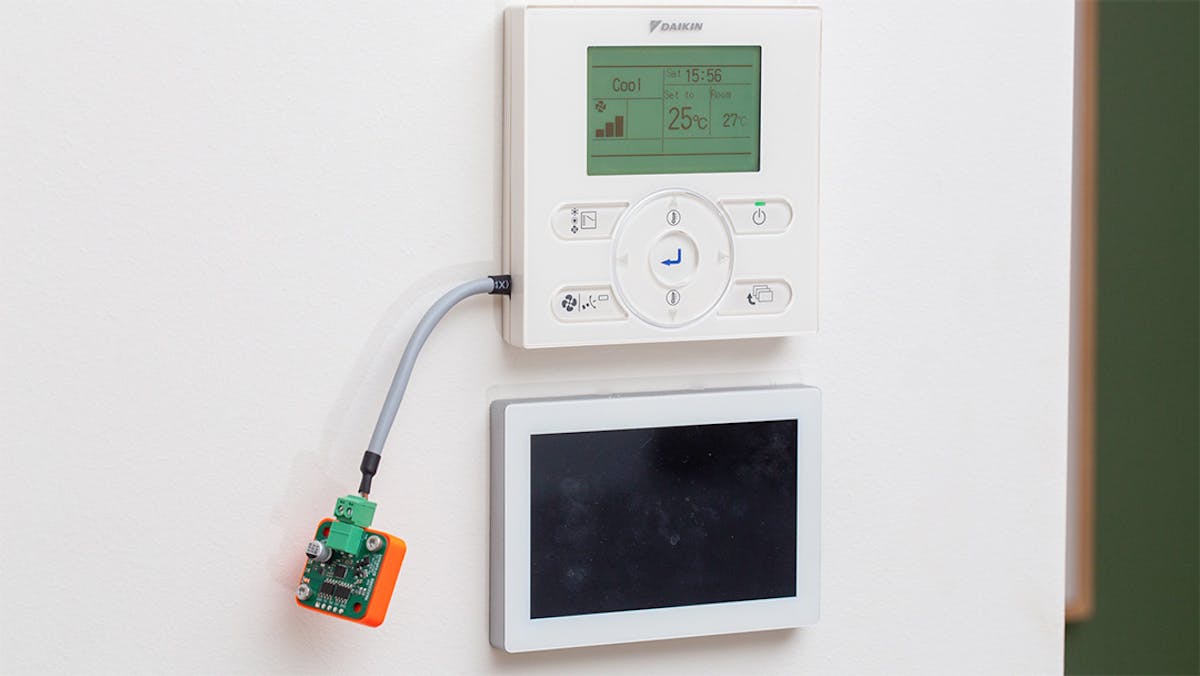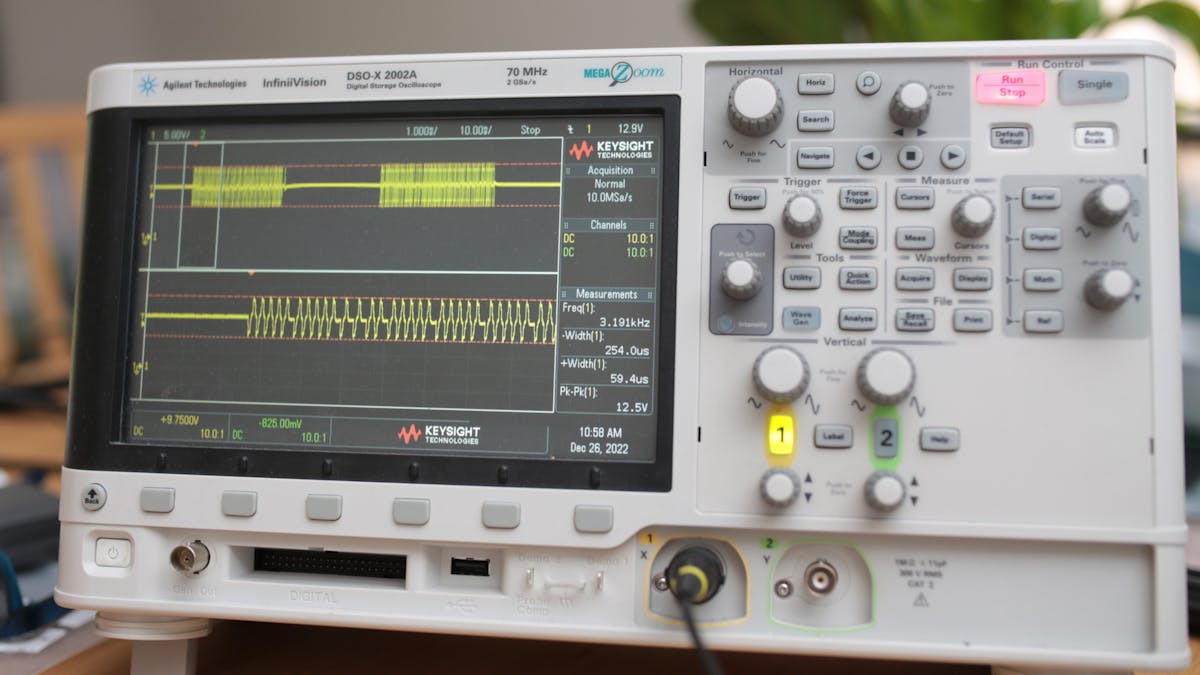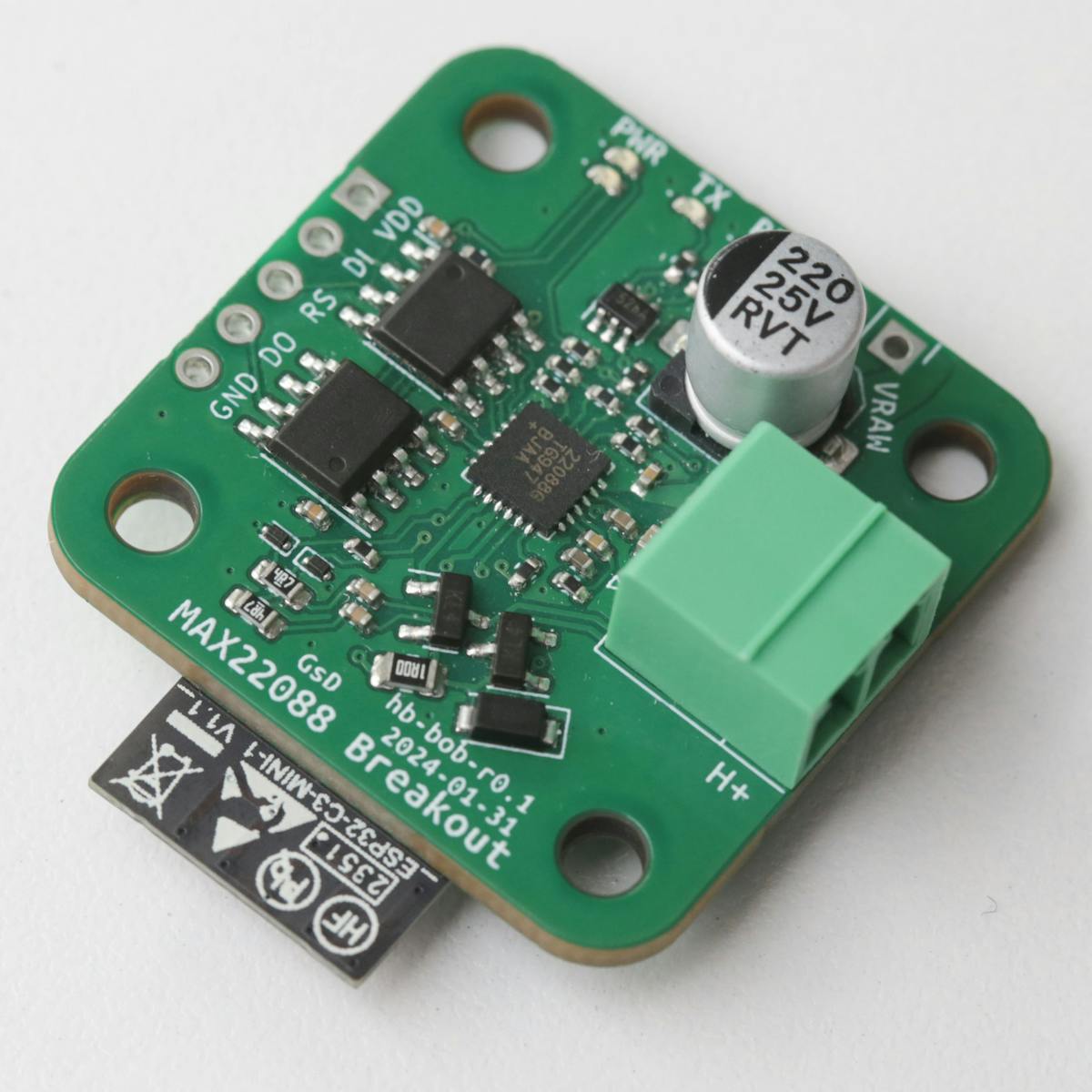Greg Davill Adds Wi-Fi to a Daikin AC Controller for Smart Home Integration
An ESP32-C3 board interfaces with Home Assistant to add automations to a P1P2-based split system.

Greg Davill turned a traditionally controlled air conditioning (AC) and heating unit into a smart device with his Daikin ESP32 Wi-Fi controller project. Now, Davill can set timers, set temperature settings that react to outdoor conditions, and automate the operation using Home Assistant.
The Daikin unit Davill has is an off-the-shelf split system. This AC/heating unit has an air circulator in a room and a compressor outside. These units sometimes have an infrared remote but often have a wall-mounted control pad connected to the unit with a wire. While some splits on the market offer Wi-Fi, and Daikin even offers a replacement controller that includes Wi-Fi, Davill's approach was to find a solution without spending over $200.

Since the hard-wired controller has a couple of wires, Davill attached an oscilloscope to try to understand the protocol. Two signals labeled P1 and P2 caught Davill's eye. These signals enable the Daikin controller to communicate with the rest of the system. It turns out an open-source project named P1P2MQTT (formerly P1P2Serial) has already done a deep dive to figure out the protocol for Daikin units.
With that knowledge, Davill created a couple of printed circuit board (PCB) revisions. One set consisted of an Analog Devices MAX2088 Home Bus transceiver breakout board and an Espressif ESP32-C3 microcontroller. The MAX2088 provides power for the rest of the circuit. The ESP32 board came from a previous project. The two-PCB approach worked well for a prototype. However, Davill wanted something cleaner without wasting the handful of breakout boards left over from the prototype stage.

Davill's solution was to create a single-sided ESP32-based PCB that mounts to the back of his MAX2088 breakout board. It contains the microcontroller module, a DC-DC step-down converter for 3.3 volts, and the most critical component to any project — an LED. Davill finished the hardware aspect with a 3D-printed enclosure. On the software side, Davill created HomeKit integrations. These allow him to automate the behavior of the previously "dumb" Daikin unit and interface with Apple Home.
Check out this Daikin ESP32 Wi-Fi controller blog post for detailed information on the P1P2 protocol, issues Davill ran into with the Espressif IDF, and links to the GitHub repositories with all of the design files.
Electronics enthusiast, Bald Engineer, AddOhms on YouTube and KN6FGY.

